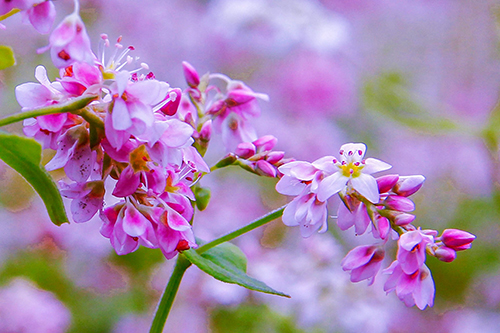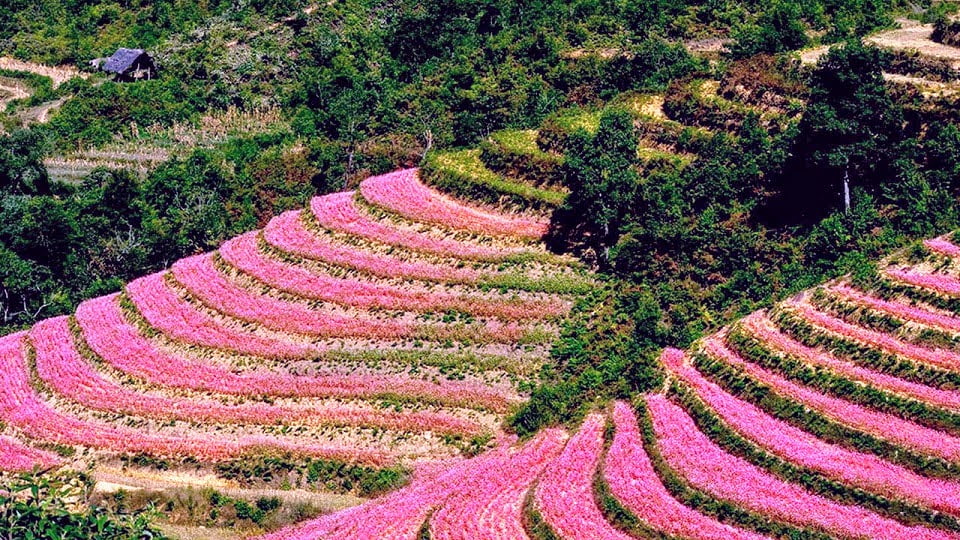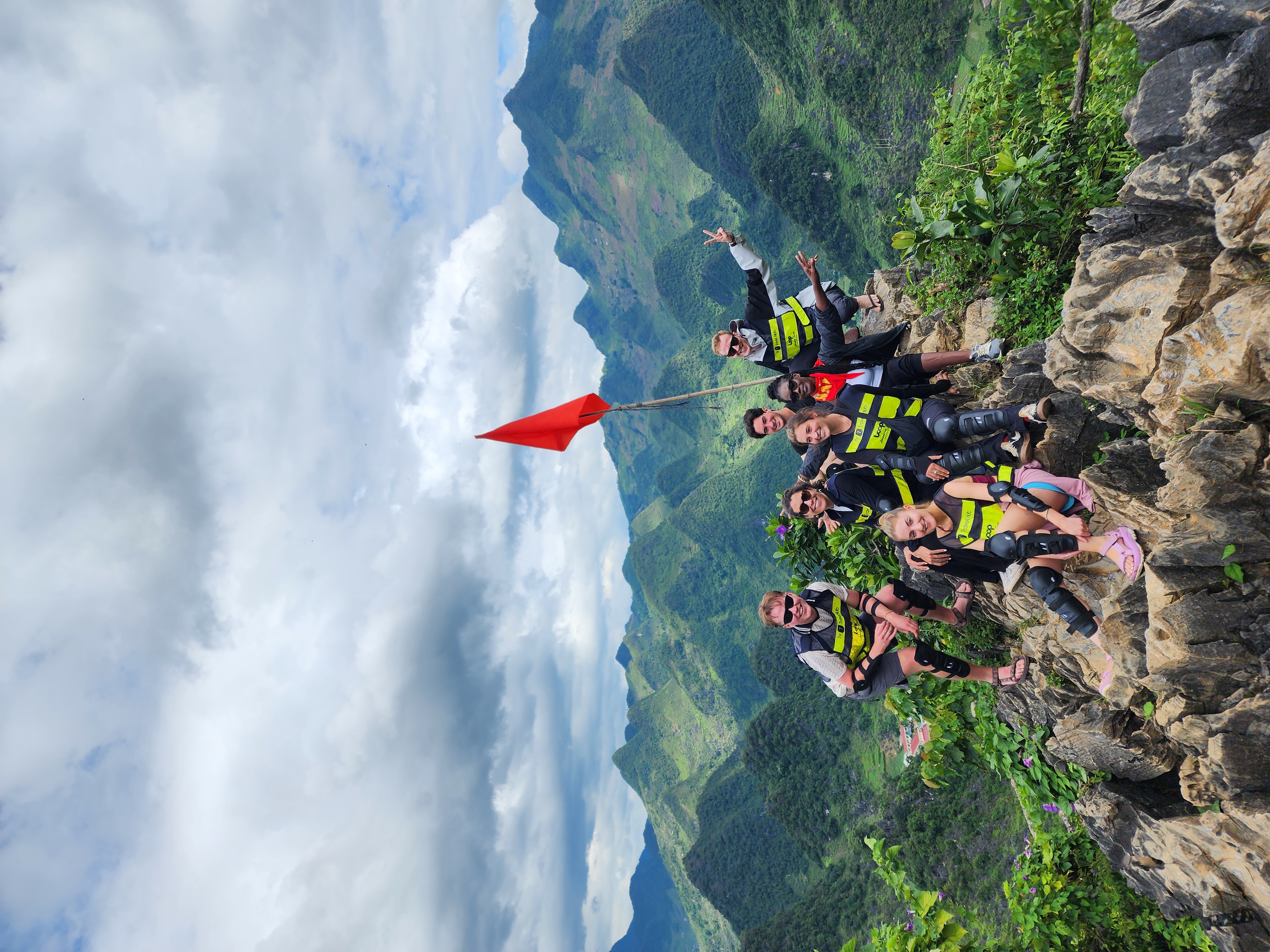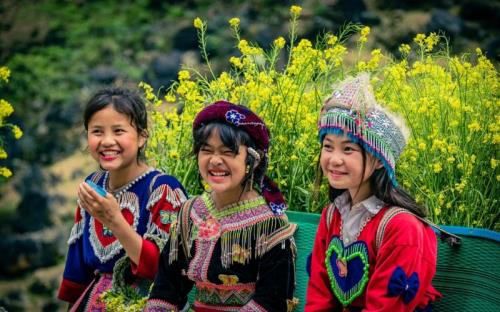Thinking about Ha Giang in November? You’re aiming right at peak season. The weather is comfortable, horizons often stretch far, and the famous buckwheat flowers dust valleys and stone fences in pink and lilac. Roads are drier than in summer, markets feel festive, and homestays fill up quickly. This guide gives you the real conditions, the best 2–4 day routes, what it costs, what to pack, key safety notes, photography ideas, and quick FAQs—so you can enjoy the Loop at its most photogenic without getting tripped up by crowds or short daylight.

Ha Giang in November: what the weather actually feels like
-
Temperature: generally 16–25°C (low 60s–mid 70s °F); cooler at altitude on Ma Pi Leng Pass and in early mornings.
-
Rain & sky: the wet season is largely past; expect more sun breaks and only the odd light shower.
-
Fog: mornings can start misty in the highlands, often clearing by late morning.
-
Daylight: shorter than summer—plan daylight-only travel and keep a 60–90 minute buffer for photos and traffic.
Bottom line: Ha Giang in November is comfortable and camera-friendly, with occasional morning mist and crisp afternoons.
Why visit in November? (pros & trade-offs)
Pros
-
Buckwheat bloom: pastel carpets in Dong Van–Yen Minh–Lung Cu areas; village lanes and terrace edges turn photogenic.
-
Stable weather: fewer storms than summer; better visibility for ridgelines and canyons.
-
Festive markets: textile colors pop against cleared skies; great people-watching and street food.
Trade-offs
-
Crowds & availability: the bloom draws visitors—book rooms/bikes early.
-
Shorter days: you’ll want earlier starts and punctual sunsets at viewpoints.
-
Prices: slightly higher than shoulder months due to demand.

Best places to catch November scenery
-
Ma Pi Leng Pass & Tu San Canyon: signature knife-edge skyline; superb in the clear, low sun of November.
-
Lung Cu & Lo Lo Chai: buckwheat lanes, stone fences, and cultural detail shots.
-
Dong Van Old Quarter: evening strolls, night market snacks, and cozy cafés.
-
Yen Minh pine ridges: soft light at sunrise; combine with nearby flower fields.
-
Du Gia Valley: gentler terraces and village life; a calm finish to busy days.
-
Hoang Su Phi (add-on): harvest is mostly over by November, but late valleys still show patchwork fields and grand terrace lines.
2–4 day itineraries (copy & adapt)
2D1N “Greatest Hits” (peak-season friendly)
Day 1: Ha Giang → Quan Ba Heaven’s Gate & Twin Mountains → Yen Minh pines → Sung La Valley → Vuong Family Palace → Dong Van (Old Quarter).
Day 2: Lo Lo Chai sunrise → Lung Cu Flag Tower → Ma Pi Leng Pass viewpoints/sky paths → optional Nho Que River boat (mid-afternoon) → Meo Vac → return Ha Giang.
Why it works: Hits headline spots with efficient driving blocks and daylight margins.
3D2N “Classic Loop + flowers”
Day 1: Ha Giang → Quan Ba → Yen Minh → flower fields around Sung La/Lung Tao → Dong Van.
Day 2: Lung Cu morning → Ma Pi Leng scenic spurs → Nho Que boat (weather permitting) → Meo Vac family dinner.
Day 3: Meo Vac → Du Gia village walks → Ha Giang → sleeper bus to Hanoi.

4D3N “Slow & Scenic”
Add an extra sunrise in Lo Lo Chai, more café/photo pauses on Ma Pi Leng, and a cultural night in Nam Dam (Dao village). The buffer day helps with crowds and gives you time to wait for perfect light.
Costs & realistic budget (per person, 2025 reference)
-
Motorbike rental: 180,000–300,000 VND/day; fuel ~60,000–120,000 VND/day.
-
Easy Rider (pillion) 3D2N–4D3N: 2.6–6.5M VND (licensed driver/guide, bike, fuel, homestays, some meals).
-
Self-ride (guided) 3D2N–4D3N: 3.2–5.8M VND (bike, fuel, guide, gear basics, stays).
-
Car/van with driver: 2.5–5.0M VND/vehicle/day (share among 4–10 travelers).
-
Add-ons: Nho Que boat 100k–150k VND; small fees at Lung Cu/Vuong Palace.
-
Meals: homestay dinners 120k–250k; lunches 60k–120k; coffee 25k–45k.
Peak-season tip: book your bike/driver and key homestays before you arrive.
What to pack for Ha Giang in November
-
Layers, not bulk: breathable base, light mid-layer (fleece), windproof/water-resistant shell for passes and breezy boats.
-
Riding basics: certified helmet, gloves with grip, long pants, sturdy shoes.
-
Sun & comfort: sunglasses, sunscreen (UVA matters year-round), refillable bottle, light scarf/neck gaiter for wind.
-
Tech & docs: phone mount, power bank, license + IDP (if riding), travel insurance, small cash.
-
Photo kit: microfiber cloths, polarizer (for canyon/water glare), 24–70mm or 24–105mm zoom; a fast 35/50mm for portraits.

Safety & etiquette (peak-season realities)
-
Daylight only. Shorter days make dusk riskier on hairpins; set fixed arrival targets.
-
Cornering: look through the turn; rely on engine braking on descents; avoid hard front-braking on damp concrete.
-
Traffic management: popular viewpoints get busy—arrive early or wait for a clean window. Park off the road and keep lanes clear.
-
Daily bike check: tires, brakes, lights, horn, chain lube each morning.
-
Respect & access: ask before close portraits, keep voices low in village lanes, pack out trash, carry ID for checkpoints.
Photography tips for Ha Giang in November
-
Golden hours rule: buckwheat fields glow at sunrise and late afternoon; avoid harsh midday angles when possible.
-
Layered vistas: on Ma Pi Leng, step a few meters off the main turnout (where safe) for uncluttered ridgeline layers.
-
People & patterns: look for villagers harvesting buckwheat, drying textiles, or carrying baskets along stone fences.
-
Polarizer & patience: a CPL deepens blue skies and controls glare; give it 10–20 minutes for clouds to shape up.
-
Respect flower fields: stay on paths and avoid trampling—your shots will still look great.

Where to base (and why)
-
Ha Giang City: pre-Loop night to collect bikes, check gear, sort permits.
-
Dong Van: center of bloom scenes + Old Quarter ambiance.
-
Meo Vac: easy access to Ma Pi Leng viewpoints and the Nho Que boat.
-
Du Gia: quieter, human-scale valley—ideal final night on a 3D2N loop.
FAQs – Ha Giang in November
Are buckwheat flowers guaranteed in November?
Usually yes, with peaks varying by micro-climate. Some fields bloom late October into November; timing differs by valley.
Is it cold?
Cool more than cold. Bring a light fleece + wind shell for passes and night rides in a car/van or on boats.
Do I need permits?
Tour operators handle border permits. Independent travelers can arrange them easily in Ha Giang City.
Will the Nho Que boat run?
Generally yes, weather permitting. It’s breezy on the water—pack your shell.
Is November good for beginners?
Absolutely. Visibility is better, roads are drier; choose Easy Rider or car/van if you’re unsure about mountain riding.

Conclusion
Ha Giang in November is the Loop’s crowd-pleasing sweet spot: buckwheat bloom, calmer skies, and comfortable temperatures. Lock your rooms and wheels early, travel only in daylight, and keep a modest buffer for photos and traffic. Build a 2–4 day route around Dong Van, Lung Cu, Ma Pi Leng, Meo Vac, and Du Gia, pack light layers plus a wind shell, and treat flower fields and villages with care. Do that, and November will give you exactly what you came for—knife-edge horizons, pastel valleys, and a camera roll full of the north’s most iconic season
Ready to plan, get a price, or just ask questions?
👉 Call/WhatsApp The Loop Tours — Hotline: +84862443320






